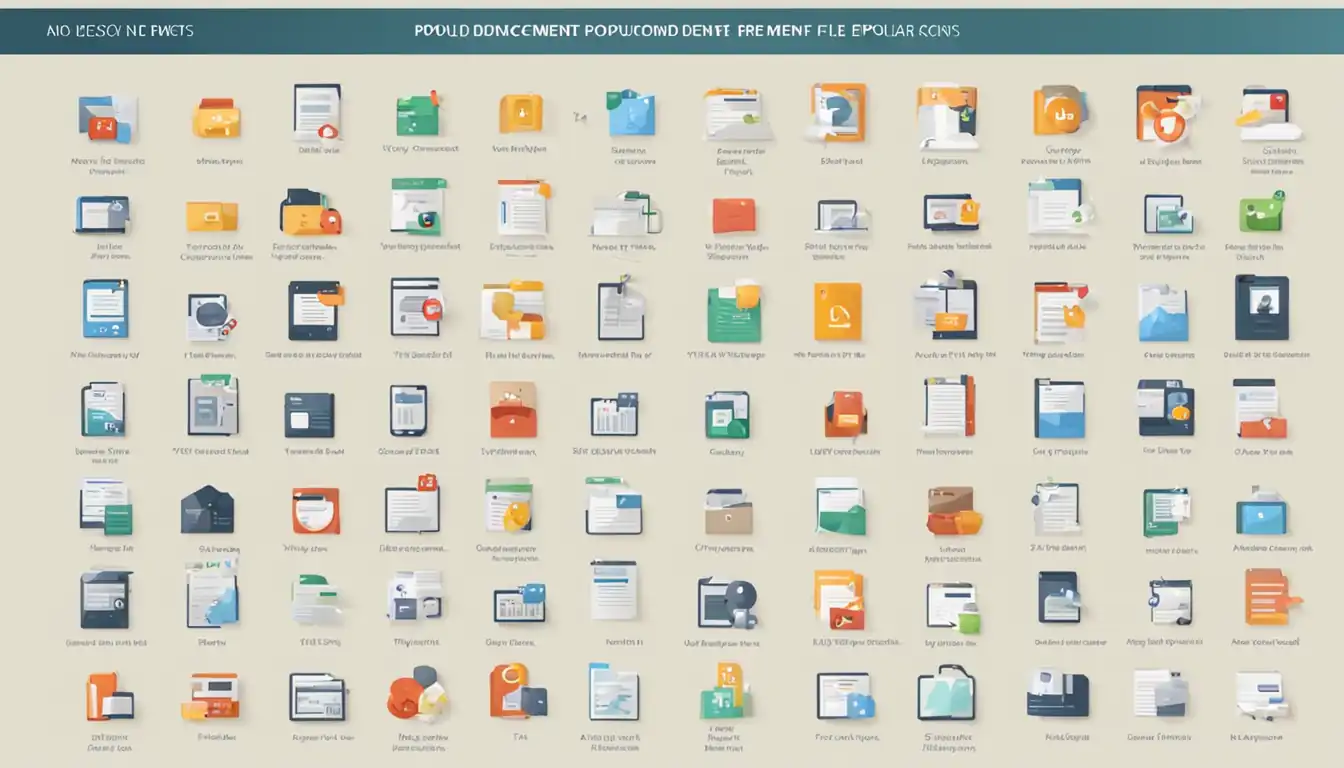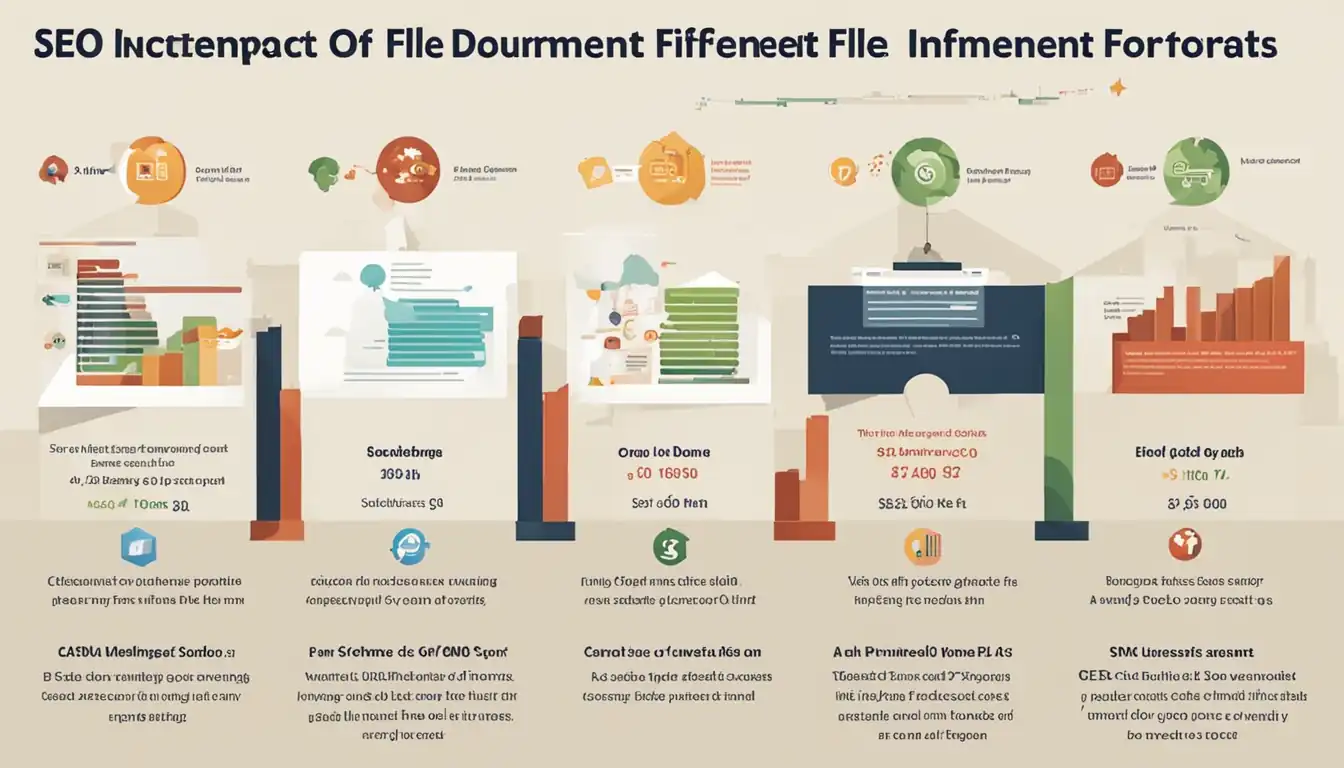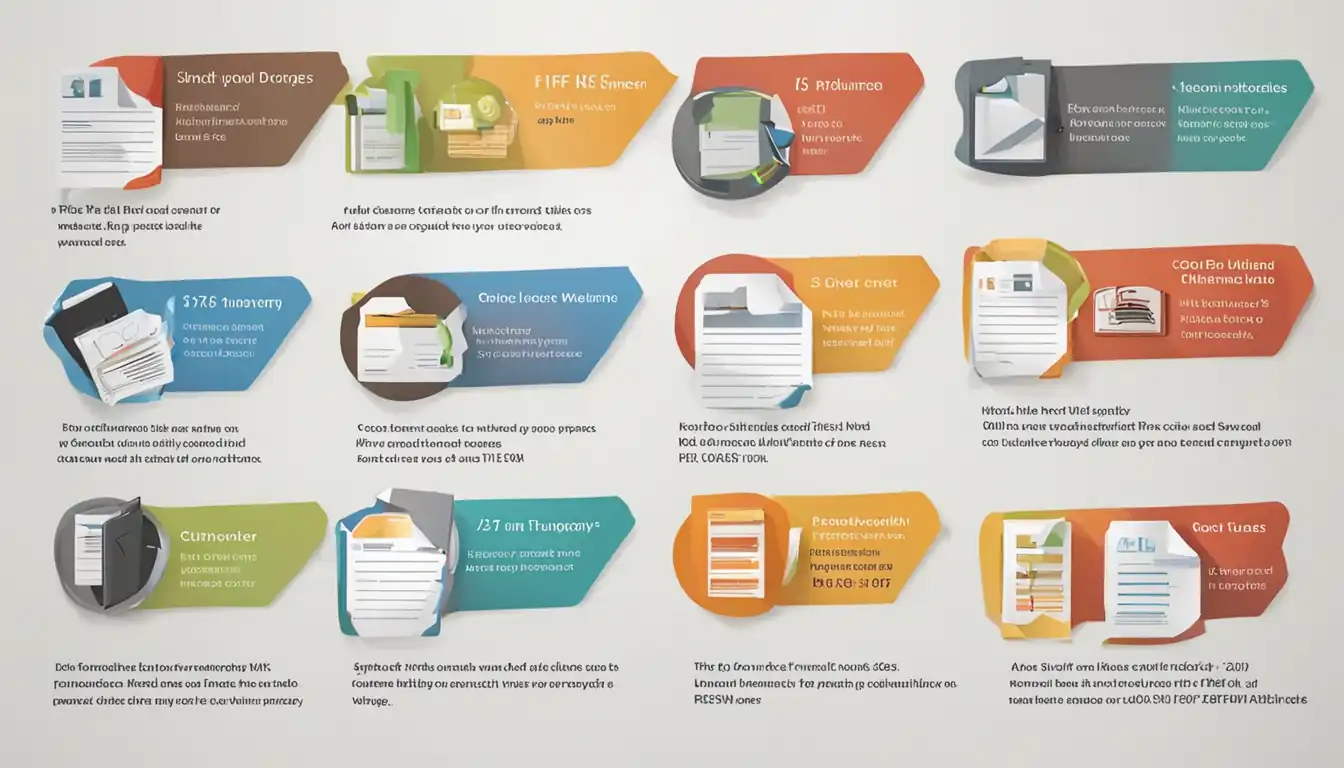Understanding Document File Formats: A Comprehensive Guide

Introduction to Document File Formats
In today's digital age, document file formats play a crucial role in how we create, share, and store information. Understanding the different file formats available and their implications is essential for effective document management. This comprehensive guide aims to provide you with a clear understanding of document file formats, their impact on SEO, and the factors to consider when selecting the right format for your needs.
The Importance of Choosing the Right Format
Choosing the right document file format is vital as it can significantly impact how your content is accessed, displayed, and indexed by search engines. It also affects the user experience and the ability to collaborate and edit documents effectively. By selecting the appropriate format, you can ensure that your content is easily accessible, secure, and optimized for search engine visibility.
Common Document File Formats
 There are several common document file formats that are widely used across various industries. Understanding their features and capabilities can help you make informed decisions when choosing the right format for your documents.
There are several common document file formats that are widely used across various industries. Understanding their features and capabilities can help you make informed decisions when choosing the right format for your documents.
Microsoft Word Document (.doc and .docx)
Microsoft Word is one of the most popular word processing applications, and its file formats, .doc and .docx, are widely used for creating and sharing documents. These formats offer a wide range of formatting options, including text styles, tables, images, and hyperlinks. They are compatible with most operating systems and can be easily edited and collaborated on.
Portable Document Format (PDF)
The Portable Document Format, commonly known as PDF, is a widely used file format for sharing documents that preserves their formatting and layout across different devices and operating systems. PDF files are highly secure and can be password-protected, preventing unauthorized access or editing. They are commonly used for distributing reports, ebooks, and other types of documents that require a consistent visual presentation.
Plain Text File (.txt)
Plain text files, represented by the .txt extension, contain unformatted text without any styling or formatting options. They are lightweight and can be easily opened and read by any text editor. While plain text files lack advanced formatting features, they are commonly used for storing and sharing simple documents, such as code snippets, configuration files, or raw data.
Rich Text Format (.rtf)
Rich Text Format, denoted by the .rtf extension, is a file format that allows for more advanced formatting options compared to plain text files. It supports various text styles, tables, images, and hyperlinks. RTF files can be opened and edited by most word processing applications, making them a versatile choice for documents that require basic formatting.
OpenDocument Text (.odt)
OpenDocument Text, represented by the .odt extension, is an open standard file format used by applications such as LibreOffice and OpenOffice. It offers similar features to Microsoft Word documents, including text formatting, tables, and images. ODT files are compatible with multiple operating systems and can be easily edited and shared.
Specialty Document File Formats
In addition to the common document file formats, there are several specialty formats that cater to specific needs and industries.
Markup Language Files (HTML, XML)
Markup language files, such as HTML (Hypertext Markup Language) and XML (eXtensible Markup Language), are used to structure and present content on the web. HTML is the standard language for creating web pages, while XML is a versatile format used for data storage and exchange. These formats are essential for web content and play a significant role in search engine optimization.
eBook Formats (ePub, MOBI)
eBook formats, such as ePub and MOBI, are specifically designed for digital books and publications. ePub is an open standard format that is compatible with various e-readers and mobile devices. MOBI, on the other hand, is the format used by Amazon Kindle devices. These formats allow for dynamic content, adjustable font sizes, and interactive features, enhancing the reading experience.
LaTeX Documents (.tex)
LaTeX is a document preparation system commonly used in academia and scientific research. It allows for the creation of complex documents with mathematical equations, formulas, and references. LaTeX documents are compiled into PDF or other formats for distribution and publication.
Factors to Consider When Selecting a File Format
When choosing a document file format, several factors should be taken into consideration to ensure compatibility, accessibility, and security.
Compatibility and Accessibility
Consider the compatibility of the file format with different operating systems, devices, and software applications. Choose a format that can be easily opened and read by your target audience without requiring specific software or plugins. Accessibility is crucial to ensure that your content can be accessed by individuals with disabilities, conforming to accessibility standards.
Security Features
Depending on the sensitivity of your content, consider the security features offered by the file format. Password protection, encryption, and digital rights management (DRM) capabilities can help safeguard your documents from unauthorized access, copying, or editing.
File Size and Compression
File size and compression are important considerations, especially when sharing or distributing documents online. Choose a file format that offers efficient compression algorithms to reduce file size without compromising the quality of the content. This ensures faster loading times and minimizes bandwidth usage.
Editability and Collaboration
If your documents require frequent editing or collaboration, select a format that allows for easy modification and real-time collaboration. Consider formats that are compatible with popular word processing applications and offer features like track changes and version control.
How Document File Formats Impact SEO
 Document file formats can have a significant impact on search engine optimization (SEO) and the visibility of your content in search engine results. Here are some ways file formats can affect SEO:
Document file formats can have a significant impact on search engine optimization (SEO) and the visibility of your content in search engine results. Here are some ways file formats can affect SEO:
Indexability by Search Engines
Search engines rely on crawling and indexing to understand the content of web pages. Some file formats, such as HTML and PDF, are more easily indexed by search engines, allowing them to extract and display relevant information in search results. Choosing an indexable format can improve the visibility of your content in search engine rankings.
User Experience and Content Accessibility
The file format you choose can affect the user experience and accessibility of your content. Formats that are compatible with different devices and offer responsive design ensure that your content is accessible to a wider audience. Additionally, formats that preserve the formatting and layout of your documents, such as PDF, enhance the readability and user experience.
Mobile-Friendliness and Responsive Design
With the increasing use of mobile devices for accessing information, it is crucial to consider the mobile-friendliness of your document file format. Mobile-friendly formats adapt to different screen sizes and resolutions, ensuring that your content is easily readable and navigable on smartphones and tablets. This improves the user experience and can positively impact your SEO rankings.
Converting Between Document File Formats
Converting between document file formats can be necessary when sharing or repurposing content. Several tools and software are available to facilitate file conversion.
Tools and Software for Conversion
There are various online and offline tools that allow you to convert documents between different file formats. Some popular tools include Adobe Acrobat, Microsoft Word, Google Docs, and online conversion services like Zamzar and Smallpdf. These tools offer a range of conversion options and ensure the integrity and quality of your converted documents.
Best Practices for File Conversion
When converting between document file formats, it is essential to follow best practices to maintain the integrity and quality of your content. Here are some tips to consider:
- Always make a backup of your original document before conversion.
- Check the converted document for any formatting or layout issues.
- Ensure that the converted document retains all the necessary metadata and hyperlinks.
- Test the converted document on different devices and platforms to ensure compatibility and accessibility.
The Future of Document File Formats
 As technology evolves, new document file formats and standards continue to emerge. Staying updated with these developments is crucial for effective document management and SEO.
As technology evolves, new document file formats and standards continue to emerge. Staying updated with these developments is crucial for effective document management and SEO.
Emerging Formats and Standards
New formats and standards, such as WebP for images and WebM for videos, are gaining popularity due to their improved compression and quality. Additionally, advancements in HTML and CSS standards are enabling more interactive and dynamic document formats.
The Role of AI in Document Management
Artificial Intelligence (AI) is revolutionizing document management by automating tasks like document classification, extraction, and analysis. AI-powered tools can enhance the searchability and accessibility of documents, improving the overall user experience and SEO.
Conclusion
Choosing the right document file format is essential for effective document management, SEO, and user experience. By considering factors such as compatibility, security, and accessibility, you can ensure that your content is easily accessible, secure, and optimized for search engine visibility. Additionally, staying updated with emerging formats and standards, as well as leveraging AI in document management, can further enhance your document workflow and SEO efforts.
Recap of Key Points
- Document file formats play a crucial role in how we create, share, and store information.
- Common document file formats include Microsoft Word (.doc and .docx), PDF, plain text (.txt), rich text format (.rtf), and OpenDocument Text (.odt).
- Specialty document file formats cater to specific needs and industries, such as markup language files (HTML, XML), eBook formats (ePub, MOBI), and LaTeX documents (.tex).
- Factors to consider when selecting a file format include compatibility, security features, file size and compression, and editability and collaboration.
- Document file formats impact SEO through indexability by search engines, user experience and content accessibility, and mobile-friendliness.
- Converting between document file formats can be done using various tools and software, following best practices to maintain document integrity.
- The future of document file formats includes emerging formats and standards, as well as the integration of AI in document management.
Final Thoughts on the Evolution of Document File Formats
As technology advances, document file formats will continue to evolve to meet the changing needs of users and industries. It is essential to stay informed about these developments and adapt your document management strategies accordingly. By understanding the impact of file formats on SEO and user experience, you can optimize your content for maximum visibility and accessibility. Remember to regularly review and update your document file formats to ensure compatibility, security, and efficiency in your document workflow.
References and Further Reading
